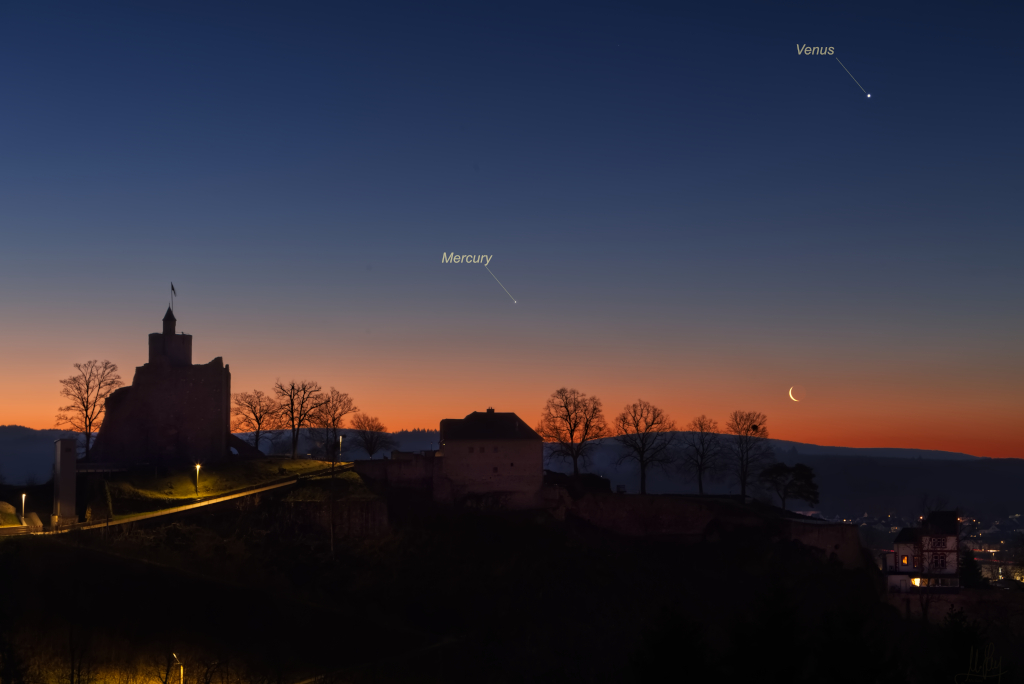2024年9月16日
Mercury’s Vivaldi Crater from BepiColombo
Image Credit: ESA, JAXA, BepiColombo, MTM
Explanation: Why does this large crater on Mercury have two rings and a smooth floor? No one is sure. The unusual feature called Vivaldi Crater spans 215 kilometers and was imaged again in great detail by ESA‘s and JAXA‘s robotic BepiColombo spacecraft on a flyby earlier this month. A large circular feature on a rocky planet or moon is usually caused by either an impact by a small asteroid or a comet fragment, or a volcanic eruption. In the case of Vivaldi, it is possible that both occurred — a heavy strike that caused a smooth internal lava flow. Double-ringed craters are rare, and the cause of the inner rings remains a topic of research. The speed-slowing gravity-assisted flyby of Mercury by BepiColombo was in preparation for the spacecraft entering orbit around the Solar System‘s innermost planet in 2026.
Tomorrow’s picture: dusty heart
贝比科隆博号眼里的韦瓦第陨石坑
影像提供与版权: ESA, JAXA, BepiColombo, MTM
说明: 为什么水星上的这个大型陨石坑有两个环以及平滑的坑底?目前没有人确定原因。这个名为韦瓦第陨石坑(Vivaldi Crater)的特殊地形,横跨215公里,并在本月初由欧洲航天局(ESA)和日本宇航研究开发机构(JAXA)合作的无人太空探测器贝比科隆博号(BepiColombo)再次进行了详细拍摄。位于岩石行星或卫星上的大型圆形特征通常是由小行星或彗星碎片撞击,或者火山喷发所引起的。在韦瓦第陨石坑的情况下,很可能是一次剧烈的撞击并导致火山喷发造成了内部平滑的熔岩流所造成的。双环陨石坑是很罕见的,其内环形成的原因仍然是个研究课题。贝比科隆博号此次借助水星的引力进行减速飞掠,是为了在2026年进入这颗太阳系 最内侧行星的轨道做好准备。
明日的图片: dusty heart




Pingback: 寻找月球上的男人 – NASA中文